Every garden has its unique personality, and often it’s the overlooked corners that hold the most potential to transform an outdoor space. Corner flower beds not only maximize space but also create focal points that tie the garden together with beauty and harmony. Whether you have a sprawling backyard or a small front garden, adding a corner flower bed is an easy way to introduce charm, structure, and bursts of color.
In this article, we’ll explore five stunning corner flower bed designs that can instantly elevate the look of your garden, along with practical tips for choosing the right plants and maintaining them year-round.
Why Choose Corner Flower Beds?
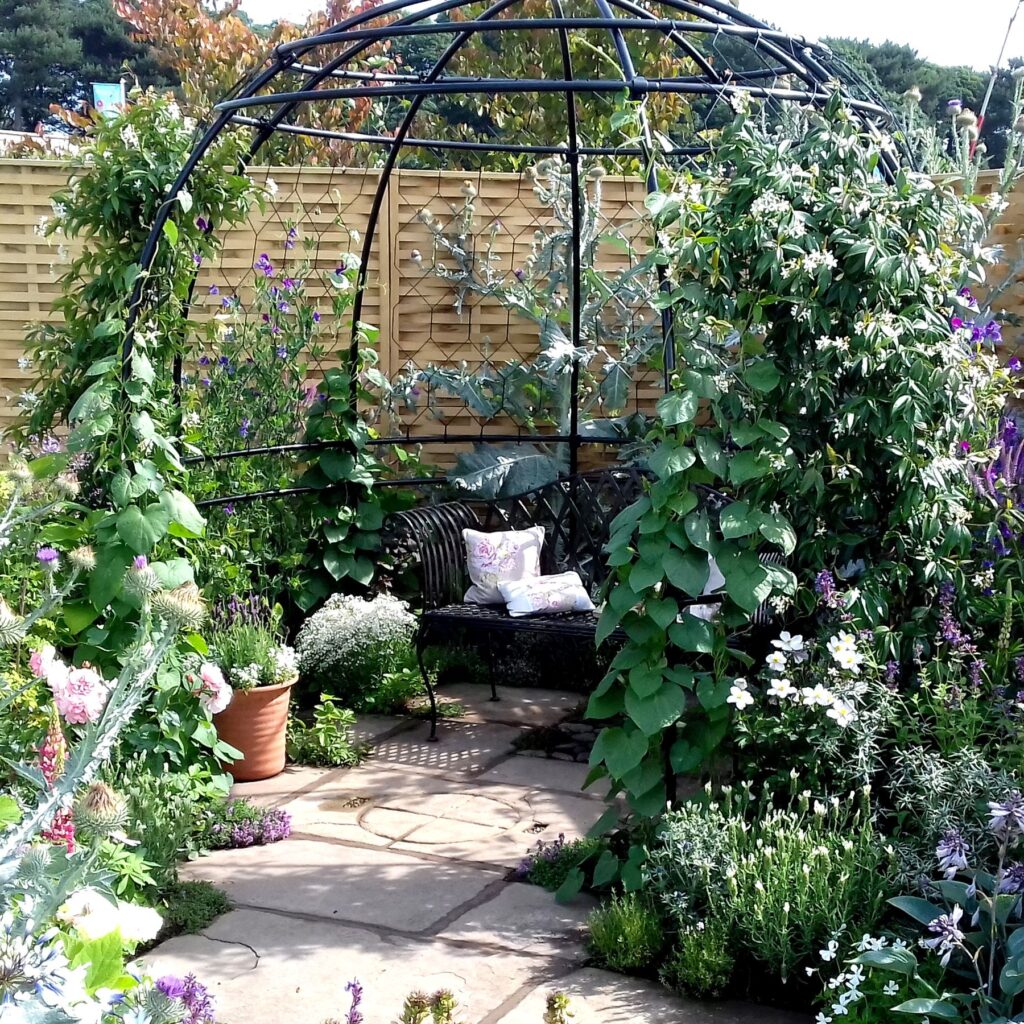
Corners often remain empty, filled with clutter, or left as unused spaces in a yard. By turning them into flower beds, you can:
- Maximize garden space by using every inch effectively.
- Create focal points that attract attention and add symmetry.
- Add color and texture to otherwise plain areas.
- Enhance garden style—from formal and structured to wild and whimsical.
With the right design, corners become opportunities for creativity rather than forgotten spots.
1. Triangular Raised Bed Corner
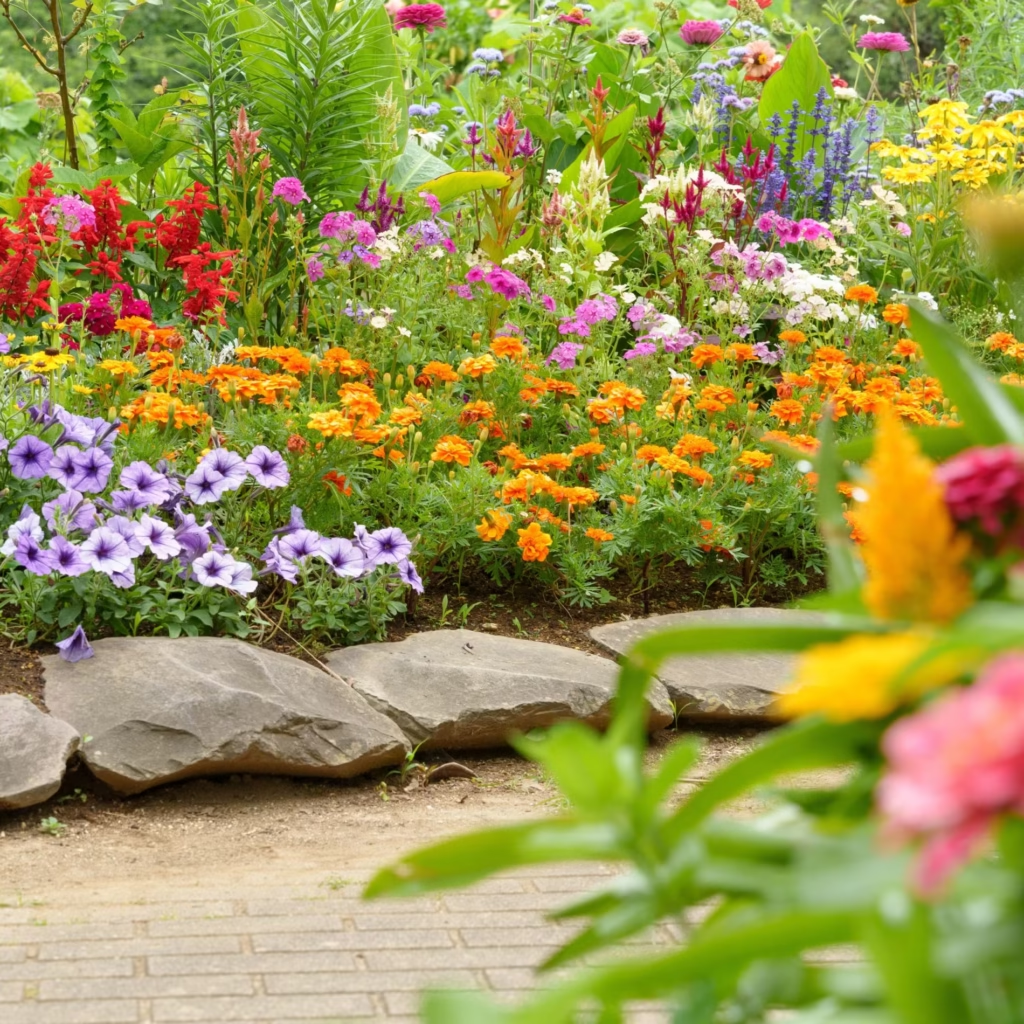
A triangular raised flower bed is a classic choice for filling a sharp or narrow corner. This design provides structure, elevates your plants, and creates neat boundaries between garden zones.
Features:
- Shape: Triangular or wedge-shaped bed.
- Materials: Use wood planks, stone bricks, or concrete blocks for the raised edges.
- Planting Style: Layered planting with taller plants at the back and trailing ones spilling over the front.
Best Plants:
- Tall backdrop plants: Delphiniums, foxgloves, or sunflowers.
- Mid-layer plants: Daisies, geraniums, or lavender.
- Trailing plants: Creeping thyme or petunias cascading over the edge.
Benefits:
- Prevents soil compaction.
- Adds vertical depth to small gardens.
- Easy to maintain and weed.
This corner design works especially well in modern and structured gardens, where clean lines and organized layouts are desired.
2. Cottage-Style Corner Bed
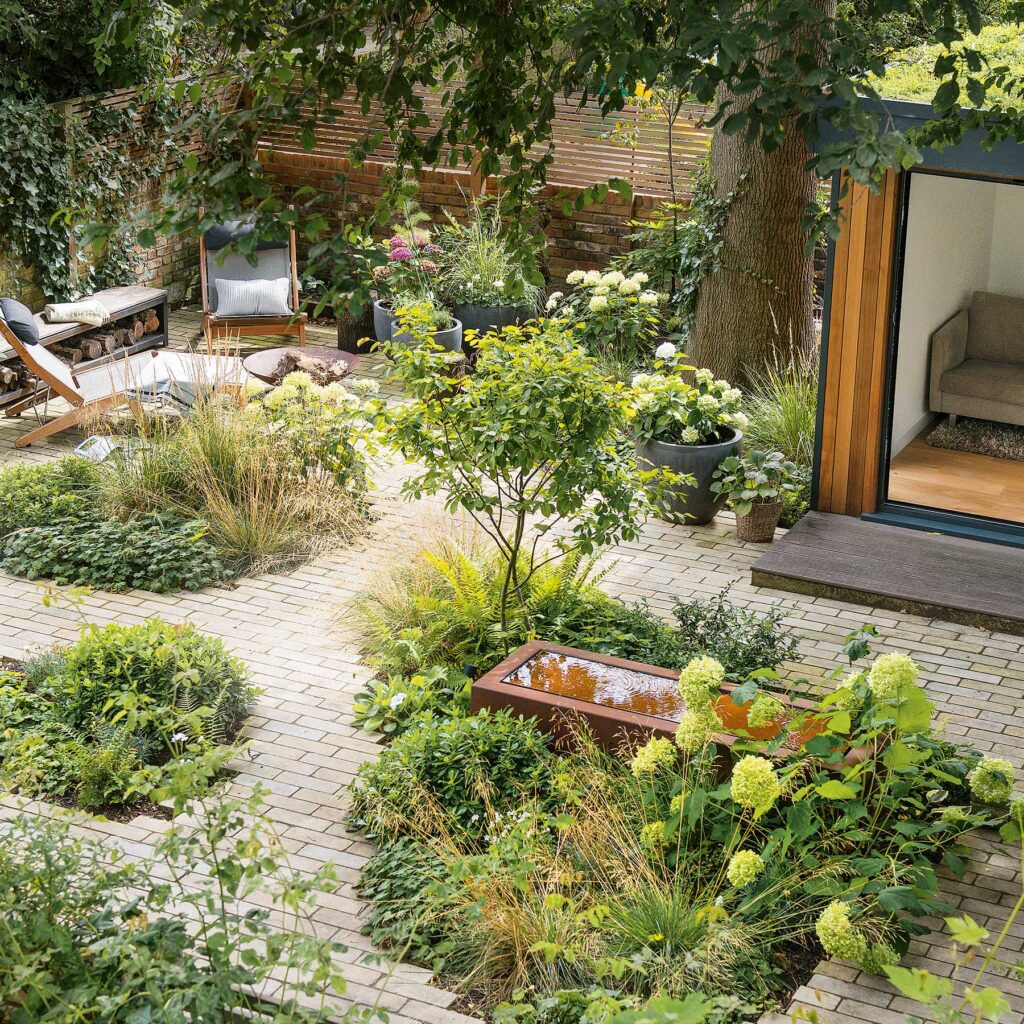
For those who love the romantic, colorful, and slightly wild look of cottage gardens, a corner flower bed in this style is irresistible. This design blends perennials, annuals, and climbers in a free-flowing arrangement.
Features:
- Shape: Informal curved bed hugging the corner.
- Layout: Mix of heights, colors, and textures.
- Extras: Add a small wooden trellis or an old garden chair as a decorative feature.
Best Plants:
- Climbers: Sweet peas, clematis, or climbing roses.
- Perennials: Coneflowers, black-eyed Susans, and phlox.
- Annuals for color bursts: Zinnias, marigolds, and cosmos.
Benefits:
- Creates a charming, whimsical effect.
- Attracts pollinators like bees and butterflies.
- Easy to customize with seasonal plants for year-round blooms.
This design thrives in front yard corners, instantly boosting curb appeal with its vibrant character.
3. Rock Garden Corner Bed

For a low-maintenance yet stylish solution, a rock garden flower bed is an excellent way to turn a garden corner into a miniature landscape. The combination of stones, gravel, and drought-tolerant plants creates a naturalistic look.
Features:
- Structure: Raised or ground-level bed using boulders and small rocks.
- Texture: Incorporates gravel mulch for water retention and weed control.
- Style: Can be rustic, desert-inspired, or alpine-themed.
Best Plants:
- Succulents: Sedum, echeveria, and hens-and-chicks.
- Perennials: Lavender, dianthus, or creeping phlox.
- Accent plants: Ornamental grasses or yucca.
Benefits:
- Requires little watering and maintenance.
- Works well in hot, dry climates.
- Adds a dramatic focal point with minimal effort.
This type of corner flower bed is perfect for homeowners who want beauty without the need for frequent upkeep.
4. Formal Symmetry Corner Bed
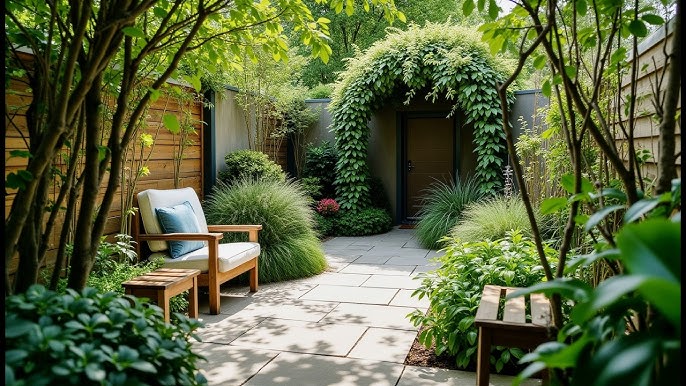
For gardens with a structured design—such as formal, classical, or Mediterranean styles—a symmetrical corner flower bed adds balance and elegance. These designs typically feature uniform planting and clear geometric shapes.
Features:
- Shape: Square or rectangular beds aligned neatly into the corner.
- Layout: Symmetrical planting with mirrored sides.
- Borders: Brick or hedge borders to create sharp definition.
Best Plants:
- Hedges or shrubs: Boxwood, privet, or dwarf holly for framing.
- Accent flowers: Tulips, pansies, or begonias arranged in patterns.
- Topiary or ornamental trees: Small citrus trees or bay laurels in the center.
Benefits:
- Creates a polished, timeless look.
- Ideal for entrances or highly visible corners.
- Easy to maintain once the shrubs and framework are established.
This design works well for formal front yards or courtyards where symmetry enhances the garden’s overall structure.
5. Wildlife-Friendly Corner Bed
If your goal is to attract birds, bees, and butterflies, a wildlife-friendly corner flower bed is a delightful choice. This design emphasizes native and nectar-rich plants that provide food and shelter for pollinators and small animals.
Features:
- Shape: Curved or irregular to mimic natural habitats.
- Extras: Add a birdbath, insect hotel, or a log pile for added biodiversity.
- Planting Style: Dense, layered, and diverse.
Best Plants:
- Pollinator magnets: Coneflowers, milkweed, bee balm, and salvia.
- Shrubs: Butterfly bush, viburnum, or elderberry.
- Ground covers: Creeping thyme or clover.
Benefits:
- Encourages local biodiversity.
- Provides a natural, relaxed garden aesthetic.
- Contributes to ecological balance.
This design is particularly appealing for backyard corners where you can sit back and enjoy the activity of buzzing bees and fluttering butterflies.
Tips for Designing Your Corner Flower Bed
No matter which design style you choose, these tips will help you create a thriving and beautiful corner bed:
- Match the design to your garden style – Whether it’s formal, rustic, or modern, keep the theme consistent.
- Consider sunlight exposure – Choose plants that suit the light conditions in that corner (full sun, partial shade, or full shade).
- Soil preparation is key – Enrich the soil with compost or organic matter before planting.
- Use height layering – Place taller plants at the back (against walls or fences) and shorter ones in front.
- Add mulch – Helps retain soil moisture and suppress weeds.
- Incorporate garden accents – Statues, benches, or trellises can elevate the design.
- Seasonal planning – Plant a mix of perennials and annuals for blooms throughout the year.
Final Thoughts
Corners are often underutilized spaces in gardens, but with thoughtful design, they can become stunning focal points that elevate the entire outdoor area. Whether you prefer the neat structure of a formal bed, the playful mix of a cottage corner, or the eco-friendly vibe of a wildlife haven, there’s a design to suit every taste and style.
By experimenting with these five corner flower bed ideas—triangular raised, cottage-style, rock garden, formal symmetry, and wildlife-friendly—you can add instant charm, vibrancy, and functionality to your garden. With the right plants and a touch of creativity, your garden corners will no longer be forgotten spaces, but cherished highlights of your outdoor haven.
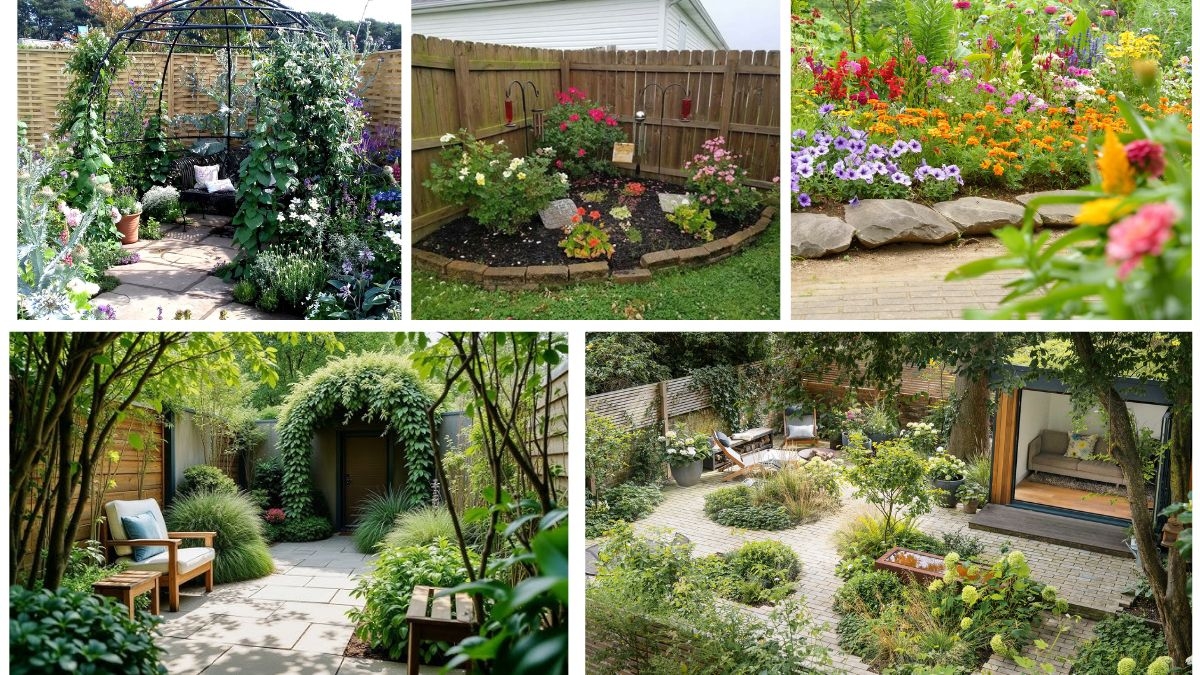

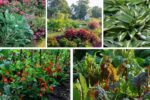
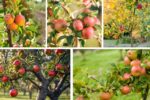

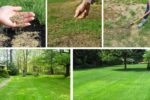
Leave A Comment